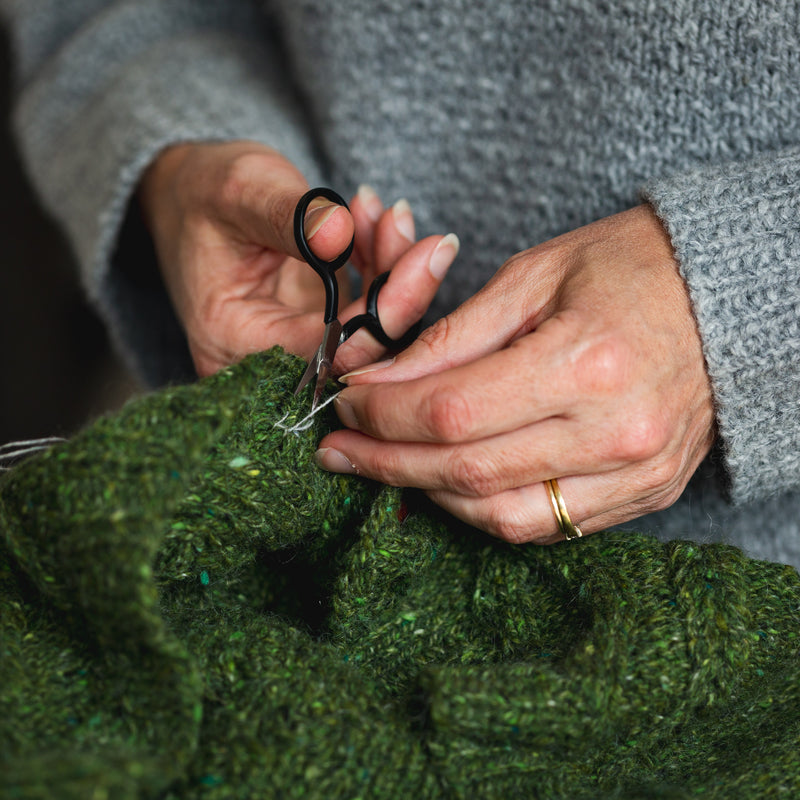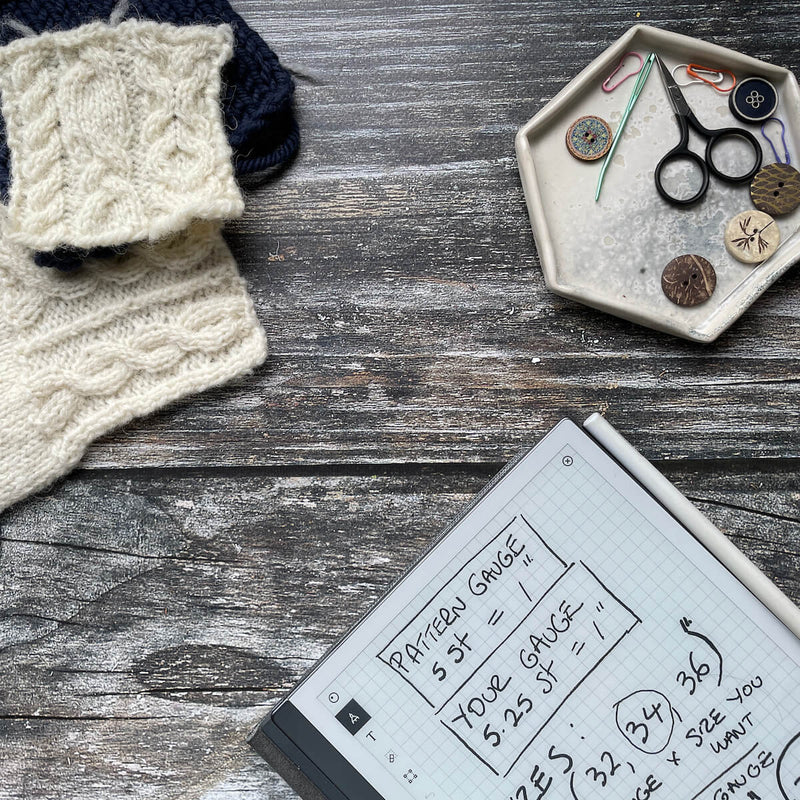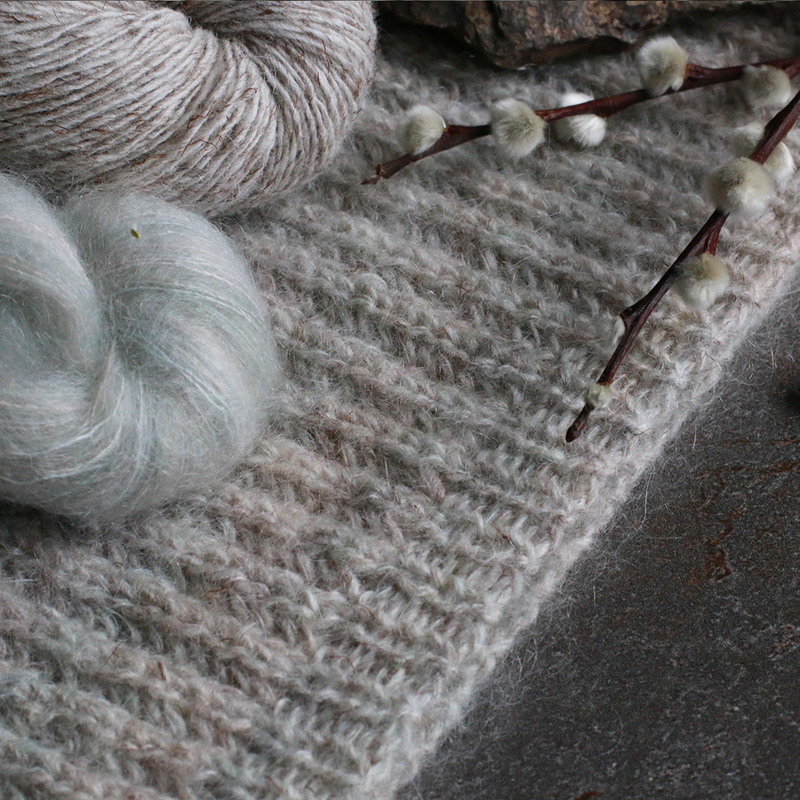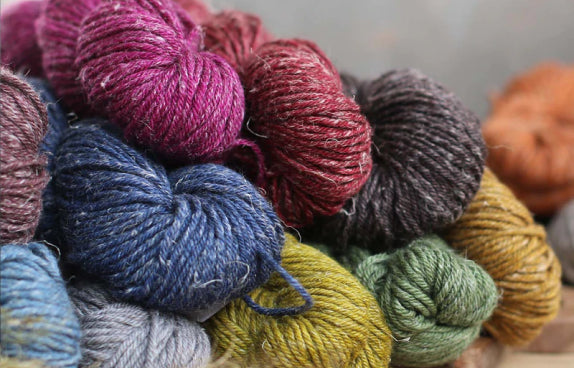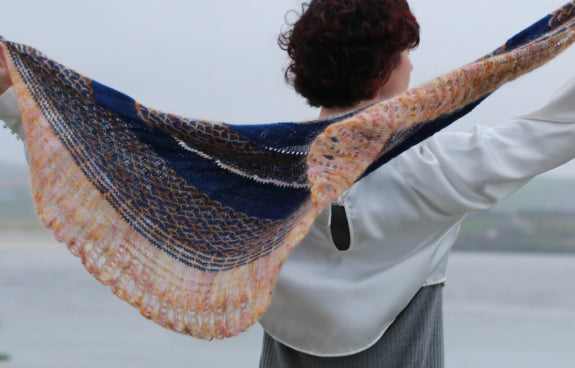Hate it, love it or love to hate it swatching is a necessary part of the knitting process. It can even be a fun part of the process. Don’t believe me?
This year our Celtic Knits Club members used their swatches to create beautiful textured cabled blankets. Each swatch teaches a new technique which was part of another kitting pattern but together at the end of the club we all have beautiful fun blankets with memories attached.
But if you’re here, you are probably wondering more about swatching. So in this post, I’ve recorded some videos and answered some of the most frequently asked questions around swatching and gauge below. If you have any questions that aren’t answered here just let me know in the comments!

WHAT IS A SWATCH?
A gauge swatch is simply a knitted square using the pattern stitches which is then blocked (more on this below) and measured to see if your chosen yarn and needles meet those described on your chosen pattern. This helps to stimulate the fabric of your chosen garment as closely as possible so you will have an idea of how your garment will react.
WHY SHOULD YOU SWATCH?
A lot of knitters get very nervous when it comes to swatching. In fact, I know many knitters who take pride in not swatching! But it can in fact be a really fun part of the knitting process. You learn all about the yarn you’ve picked as well as the stitch pattern. It allows you to test the combination in a small, controlled piece of knitting which give you the space to decide if it will work on a larger project.
It also gives you the most valuable bit of information for controlling the size of your finished knit; the size of your stitch!
But remember it’s not just about gauge.
If you get gauge but the fabric is too loose or too tight you may want to adjust the gauge or use a different yarn.
HOW TO SWATCH
This is one of those questions that needs a bit of explanation so here is a video for you:
You you should try to make your swatches 6-8″ square so that you can measure your tension correctly. But Carol my knitting pattern says a 4 inch square. Yes it does but knitting a larger swatch allows you to accurately measure a 4 inch square without the outer stitches being distorted by the edge stitches.
Now if you are wondering how to accurately block and measure a swatch you can press play on the following video:
HOW TO BLOCK AND MEASURE A SWATCH
HOW TO SWATCH IN THE ROUND
If your row gauge changes a lot when you are working in the round rather than flat you may want to swatch in the round to get your gauge as accurate as possible.
You can either do this by creating a small circular swatch or you can ‘fake’ it with a flat swatch that pretends to be in the round.
You do this by slipping back to the start of the row at the end of every row and looping the yarn behind the swatch. Have a hard time imagining it? Then press play on this video:
HOW BIG SHOULD IT BE?
A gauge swatch (sometimes known as a tension square) should be around 6 inches square (15 cm square). This allows you to avoid the edges of your work where the stitches are more likely to be uneven and will give you an inaccurate result.
So if the gauge was supposed to be 20 sts = 4”/10cm you would cast on 30 sts for your gauge square.
SHOULD I BLOCK IT?
It’s very important to treat your swatch in the same way you will treat your finished garment. This will let you accurately estimate the size of your finished knit. So if it’s going to be blocked aggressively, do that with the swatch. If you wet-block, do that with the swatch.
I like to wet block and then lay (and sometimes pin) it out on a foam mat. This gives me the same result as I’ll have for my finished knit.
HOW TO MEASURE?
After you unpin your swatch you should shake it out and ideally let it sit for a few days so that it will revert to a more relaxed state.
Then you want to measure both the stitches and rows in several places. Try to avoid any obviously loose or tight stitches. You can take an average of the stitches and rows.
IF MY SWATCH IS THE WRONG SIZE WHAT DO I DO?
If you swatch does not match the pattern gauge you have to decide how you want to proceed. The first question you have to ask yourself if whether you like the fabric. If the fabric feels good (not too loose or too tight) then you may decide to either knit a different pattern size or perhaps try a different yarn. If you want to try adjusting the gauge you will either try a different needle size or even a different needle material to see how that impacts the gauge. I even know that some knitters will even try changing their knitting style!
WHAT DO I DO IF MY SWATCH IS TOO BIG?
If your swatch is turning out too big it means the stitches are too large. You will have fewer stitches in the 4”/10 cm. For our stitch gauge of 20, you may have only 18 or 19 stitches over the 4”. If your stitches are too large you can try using a smaller needle size.
WHAT DO I DO IF MY SWATCH IS TOO SMALL?
If your swatch is turning out too small it means the stitches are too small. You will have more stitches in the 4”/10 cm. For our stitch gauge of 20, you may have 21 or 22 stitches over the 4”. If your stitches are too small you can try using a larger needle size.
WHAT DO I DO IF MY STITCH GAUGE IS CORRECT BUT NOT MY ROW GAUGE?
In this case, I would suggest stitching with the correct stitch gauge and adjusting your lengths as you work to compensate for the difference in row gauge.
Phew! I think we’ve covered a lot in this post. Please do set aside time for swatching. It is a fun way of getting to work with new yarn or needles and really having a play with new fibres before you really get to work on a garment or larger project. As I said earlier if you have a swatch or gauge question that I haven’t answered here please do pop it in the comments!
If you want to learn more about swatching or knitting tools or Knitting 101 you can find my beginners courses over here.
Don’t forget to share what you’re working on in our community by either posting in our Knithub or Facebook group or by tagging us on social with #stolenstitches.



